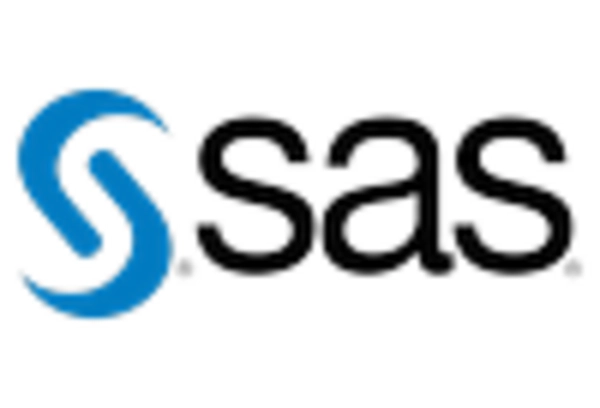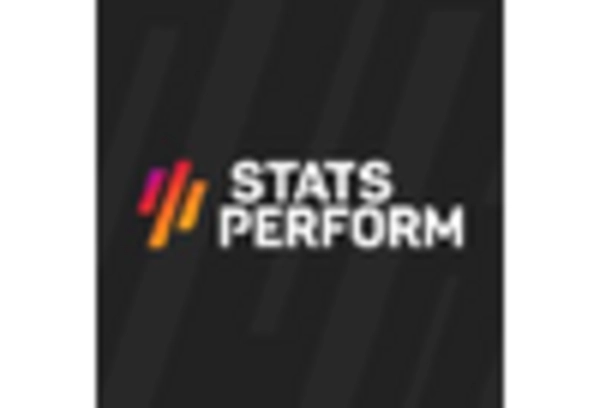The sports analytics market is currently characterized by a dynamic competitive landscape, driven by technological advancements and an increasing demand for data-driven decision-making in sports. Key players such as SAS Analytics (US), IBM (US), and STATS Perform (US) are at the forefront, leveraging their expertise in data analytics to enhance performance metrics and fan engagement. SAS Analytics (US) focuses on innovation through advanced predictive analytics, while IBM (US) emphasizes partnerships with sports organizations to integrate AI solutions into their analytics platforms. STATS Perform (US) is strategically positioned to capitalize on real-time data collection and analysis, which is crucial for teams and broadcasters alike. Collectively, these strategies foster a competitive environment that prioritizes technological integration and data utilization.
In terms of business tactics, companies are increasingly localizing their operations to better serve regional markets, optimizing supply chains to enhance efficiency. The market structure appears moderately fragmented, with several players competing for market share. However, the influence of major companies is substantial, as they set industry standards and drive innovation. This competitive structure allows for a diverse range of offerings, catering to various segments within the sports analytics domain.
In October 2025, IBM (US) announced a strategic partnership with a leading football league to develop an AI-driven analytics platform aimed at enhancing player performance and fan engagement. This move underscores IBM's commitment to integrating cutting-edge technology into sports, potentially revolutionizing how teams analyze player data and make strategic decisions. The partnership is likely to enhance IBM's market position by providing unique insights that can be monetized through various channels.
In September 2025, STATS Perform (US) launched a new suite of analytics tools designed specifically for esports, reflecting the growing importance of this sector within the sports analytics market. This initiative not only diversifies STATS Perform's offerings but also positions the company as a leader in a rapidly expanding niche. The strategic importance of this launch lies in its potential to attract a younger demographic, thereby expanding the company's customer base and revenue streams.
In August 2025, SAS Analytics (US) expanded its operations into the UK market by establishing a new office in London, aimed at enhancing its service delivery to local sports organizations. This expansion is indicative of SAS's strategy to localize its offerings and strengthen its presence in key markets. By doing so, SAS Analytics (US) is likely to improve its competitive edge, as localized services can lead to better customer relationships and tailored solutions.
As of November 2025, the competitive trends in the sports analytics market are increasingly defined by digitalization, sustainability, and the integration of AI technologies. Strategic alliances are becoming more prevalent, as companies recognize the value of collaboration in enhancing their technological capabilities. Looking ahead, competitive differentiation is expected to evolve, shifting from traditional price-based competition to a focus on innovation, technological advancements, and supply chain reliability. This transition may redefine how companies position themselves in the market, emphasizing the importance of agility and responsiveness to emerging trends.

















Leave a Comment